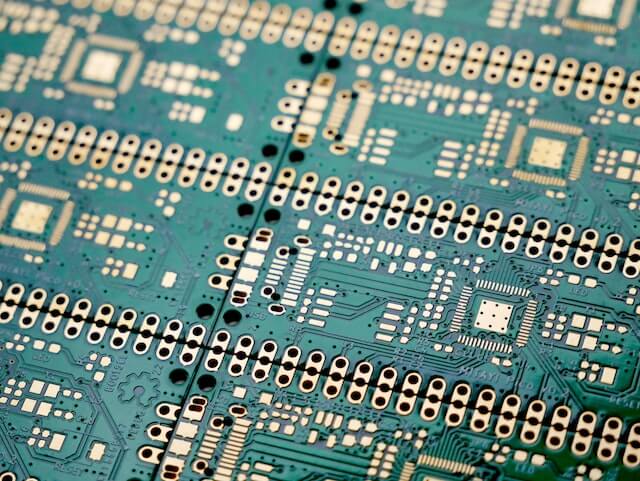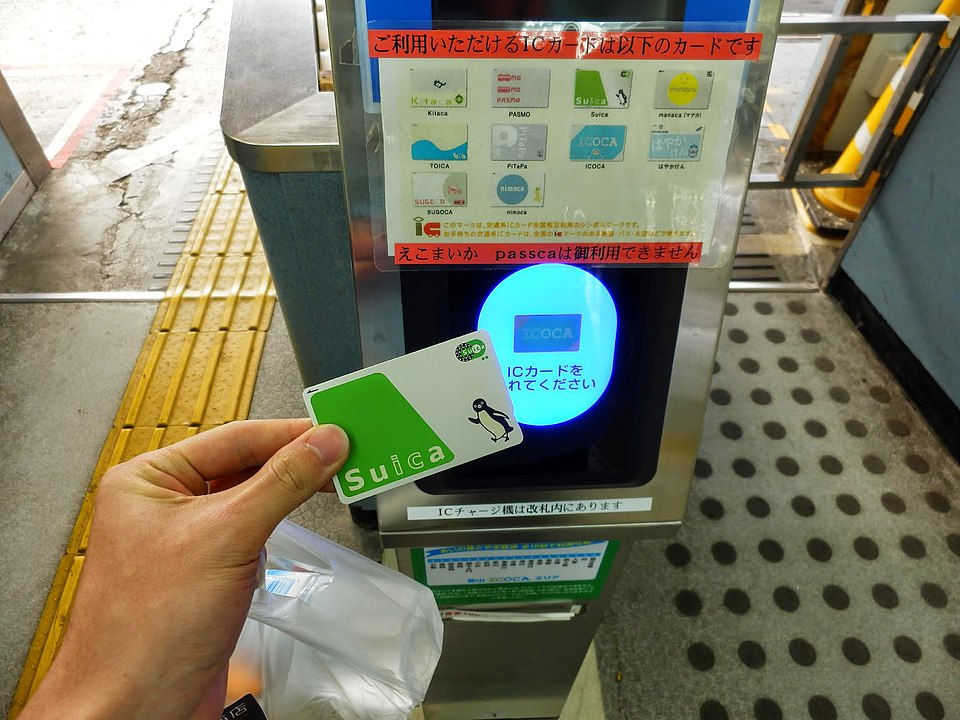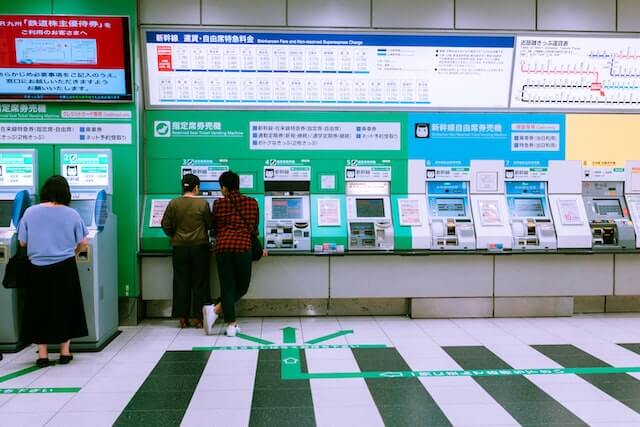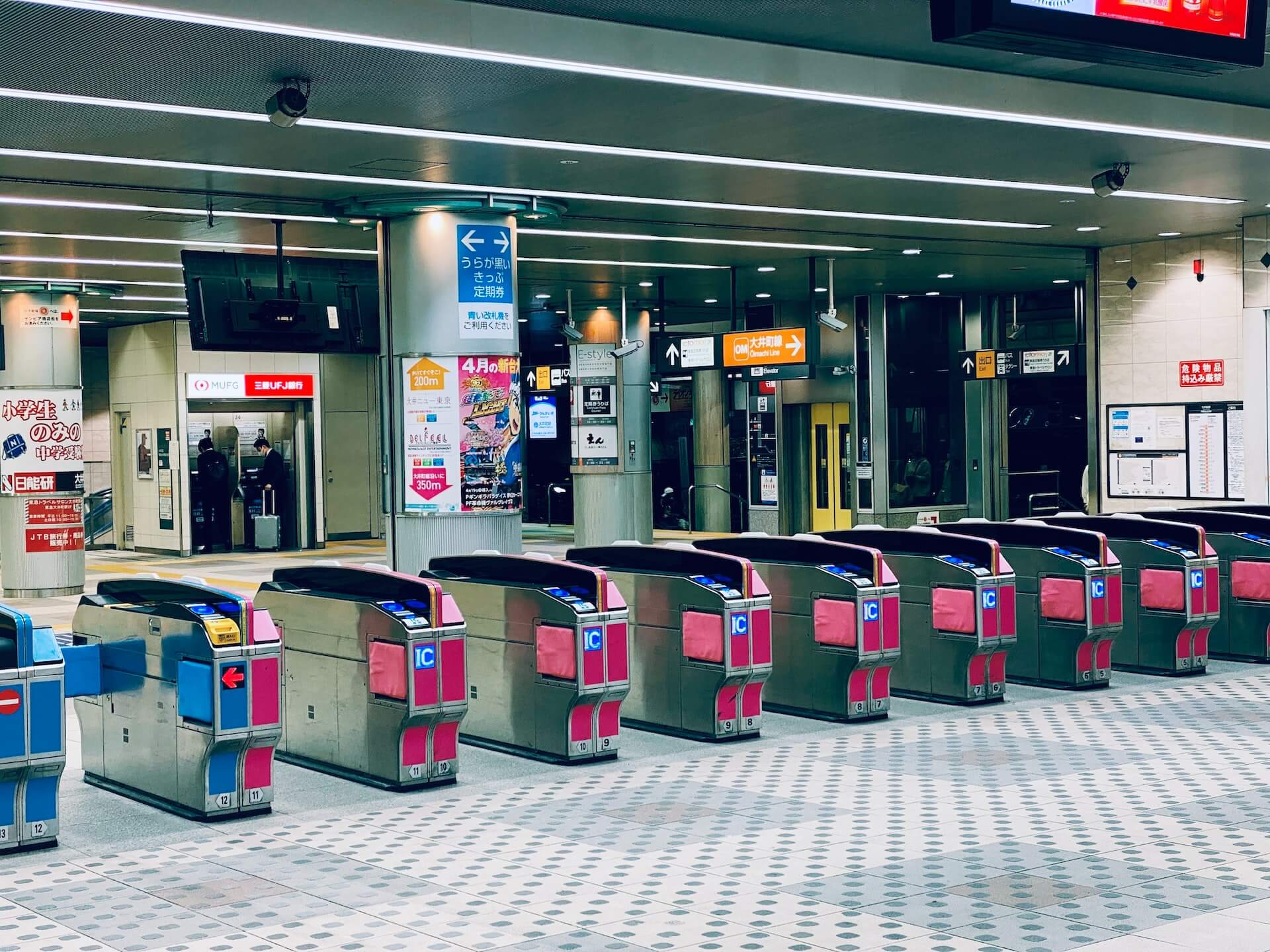There’s no better way to get from A to B in Japan than by ripping around on trains. Unfortunately, buying tickets for each ride can be a bit annoying, not to mention time-consuming. That’s where IC cards come in.
IC cards are plastic cards with integrated chips inside, allowing tap-style payment of train fare. There are several types in Japan that all work by tapping them at station gates with IC sensors. More recently, vending machines and shops have also accommodated IC payment for purchasing goods.
Different IC cards apply to different areas, and there are plenty of interesting quirks to this payment technology as you’ll see in the rest of the article.
What Does IC Card Stand For?
IC card stands for “integrated circuit card.” These cards contain special chips that store information and can even perform calculations. The East Japan Railway Company first developed the IC card for rail as a way to have contactless pay for train fare. All it takes is a tap on an IC reader.
The first cards were used in greater Tokyo in 2001, and these days it’s tough to imagine a time without them. They make train travel much more convenient and are useful for other things, too.

Photo by Vishnu Mohanan
IC Card Uses
The most obvious way to use an IC card is on the train. Charge your card up, tap it at the train station you’re departing from, and tap it again after arrival. No paper train tickets. No fuss.
And not only can you use it on trains, but you can also use it on many buses and subways, too. Just make sure you check for an IC logo or IC card logo.
The third and possibly even best way to use an IC card is for shopping. If a cash register has the logo of your IC card on it, you can tap instead of fishing around for money in your wallet.
Many vending machines even have a place to tap, especially if it’s one in a station.
In a country that’s slow to adopt credit and debit cards, this can be a godsend.
Can You Use IC Cards on Bullet Trains?
Yes, you can use IC cards on some bullet trains, but the process is complicated and takes a lot of the convenience out of having an IC card. JR East bullet trains might be the easiest, but even that requires a special set up at ticket machines.
The tokaido sanyo kyushu shinkansen line requires online setup along with credit card information.

East and northern Japan bullet trains require a similar process online.
If you’re looking to ride a bullet train, you can make your life a little easier by simply getting your bullet train tickets in person.
How to Get an IC Card
To get started on your integrated circuit adventure, there’s one itty bitty hoop to jump through. Thankfully, it’s painless.
Depending on the type of card you want (we’ll come to that), all you need to do to get it is go to a train station counter or a train ticket machine. You’ll have to pay a deposit on the card (¥500) and possibly a service fee (the Suica card price is ¥220, for example).
You’ll also likely be asked to put a first charge on the card. Usually this will be at least ¥1,000, but it’s ¥1,000 that you’re going to use anyway.
There are a few other minor details that depend on your situation and the type of card you want to get. For example, most IC card companies will give you the option of registering your name to the card, a worthwhile step if you think you might ever lose your card.
There are also cards with limited time periods for tourists and commuter cards with discounts on frequent routes for those wanting to lower their cost of living in Japan.
Which IC Card is Best in Japan?
If you live in Japan and ride the train to work every day, you may want to consider getting a commuter pass with the card company that applies to your area. For Tokyo subway riders, that would be the PASMO card.
If you’re a tourist who’s only going to be in the country for four weeks, you may want to consider a tourist card. The Welcome Suica card applies to areas operated by JR East like Tokyo, while the Kansai One Pass is better if you’re spending a lot of time around Kyoto and Osaka. The Kansai pass also provides benefits like shopping discounts.
If you live in Japan, however, choosing an IC card is as simple as finding the one that applies to your area.
Japan’s Many IC Cards

There are a total of 10 major IC card companies throughout Japan, all specializing in different areas.
| Card Name | Applicable Area | Special Version |
| Suica | Operated by JR East in the Tokyo metropolitan, Sendai, and Niigata areas | 4-week tourist card, “Welcome Suica” |
| PASMO | Non-JR Tokyo railway, subway, and buses | 4-week tourist card, “Pasmo Passport” |
| ICOCA | Operated by JR West in Osaka, Kyoto, Chugoku, and Hokuriku areas | Tourist pass without expiry, “Kansai One Pass.” Offers deals on certain shopping areas |
| PiTaPa | Non-JR Kansai region operators | None |
| Toica | Operated by JR Central in greater Nagoya and parts of Shizuoka | None |
| Manaca | Non-JR and Meitetsu Nagoya region operators, including trains and buses in Nagoya City | Commuter pass that provides discounts for those regularly using one route |
| Kitaca | Operated by JR Hokkaido in the greater Sapporo area | Different versions of original that are mostly the same |
| SUGOCA | Operated by JR Kyushu in greater Fukuoka, Nagasaki, Oita, Kumamoto, and Kagoshima | None |
| Nimoca | Nishitetsu trains and buses in Fukuoka and a handful of other Kyushu locations | None |
| Hayakaken (Japanese link) | Fukuoka subway | None |
While each card is designed for a specific region, you can use them almost anywhere IC cards are accepted.
For example, the Toica card can be used in the ICOCA card’s applicable area as long as you’re not taking a train from a Toica station to an ICOCA station.
The exception to this universal use rule is PiTaPa. Unfortunately, the other cards aren’t compatible with those readers, so they’ll require physical tickets or a PiTaPa card.
The Jr. IC Card
If you’re pulling a kiddo along with you through Japan or if you live in Japan and have a child, consider the junior IC card for extra benefits.
The deposit on the card and all fees are the same as the adult pass, but the junior IC card applies child rates to the fees when tapping the card.
All companies include this option for children under the age of 12. Unfortunately, from their 12th birthday and on, it’s adult fees.
How to Charge Your IC Card
If you need to charge your card, the process is simple. Just take it to any train station ticket machine with an IC card reader.

Photo by Christian Chen
There, you’ll place the card on the reader, hit the charge option, and put your cash into the machine. Just be aware that IC cards have a limit to how much money you can store, generally ¥20,000.
Mobile IC Card Apps
As with most things, IC cards are increasingly looking to go digital. Currently service is limited to only a few companies, like Suica (Japanese resource).
The app is available to Android and Apple users alike and has a similar ¥20,000 charging limit to the IC card.
Other cards are looking to make the switch in the near future too, like ICOCA in 2023 (Japanese resource).
Don’t worry, though. Plastic cards can still be used at both of the applicable areas.
Local Themed IC Cards
If you’re just visiting Japan, feel free to skip over this. If you’re a resident, pay attention.
Many small towns and cities in Japan run campaigns for the regional IC card provider, offering themed cards along with a decent amount of cash pre-loaded onto the card.
If you don’t mind a bit of Japanese, it’s worth looking into. Just google your city or region’s name along with the name of the regional IC card provider and see what comes up.
Niimi City, in Okayama prefecture is one example. In an effort to raise awareness for the increase in IC-accessible stations, they ran a campaign, using their adorable mascot as the theme for the card. Those who got the card during the campaign received ¥5,000 pre-loaded onto the card.
Conclusion
Whether you’re in Japan for tourism or if you live here, IC cards can make your life a lot easier. There are plenty of options, all of which can be used throughout most of the country. And there’s no doubt that they’ll make things easier by letting you tap at shops and train stations instead of rifling through wallets.
Sign up for the one that applies best to your region and wave goodbye to paper tickets and cash.
Suica card image by タチヤマカムイ – Own work, CC BY-SA 4.0, https://commons.wikimedia.org/w/index.php?curid=48696375




